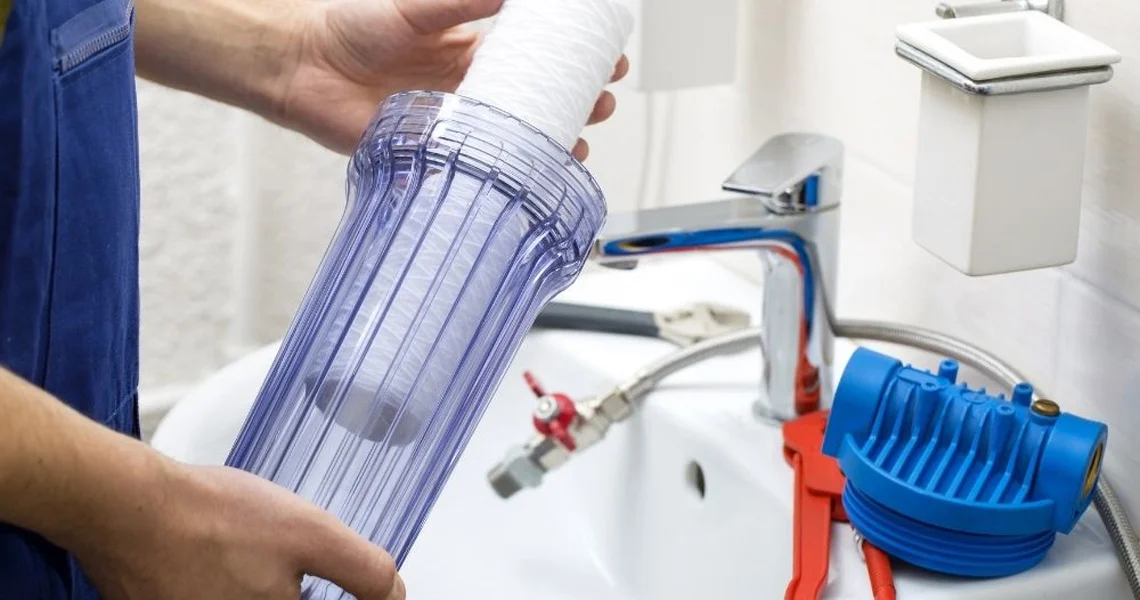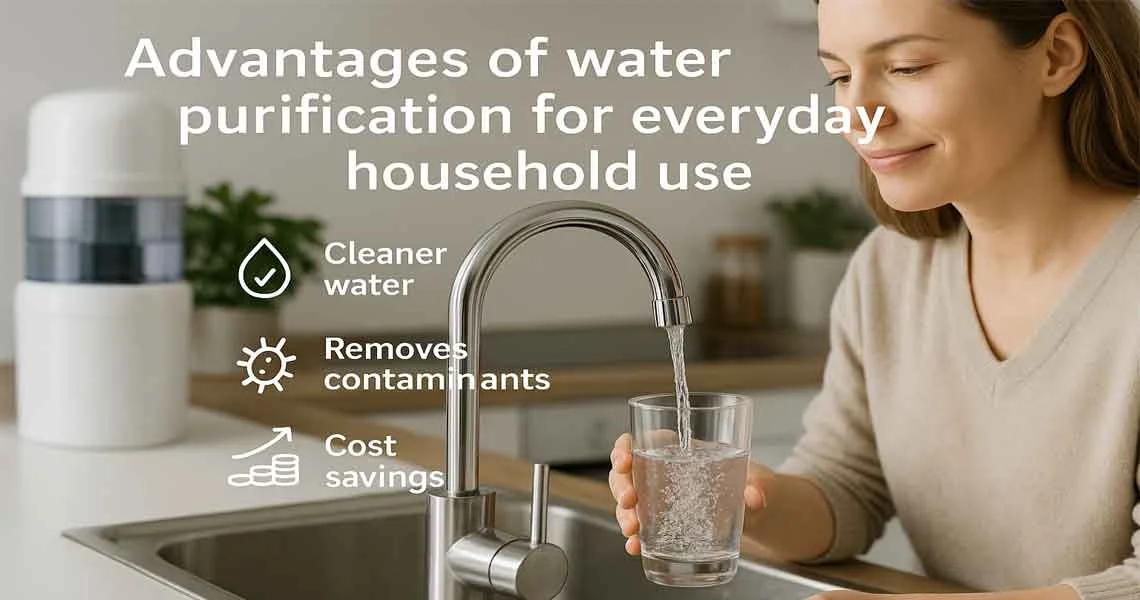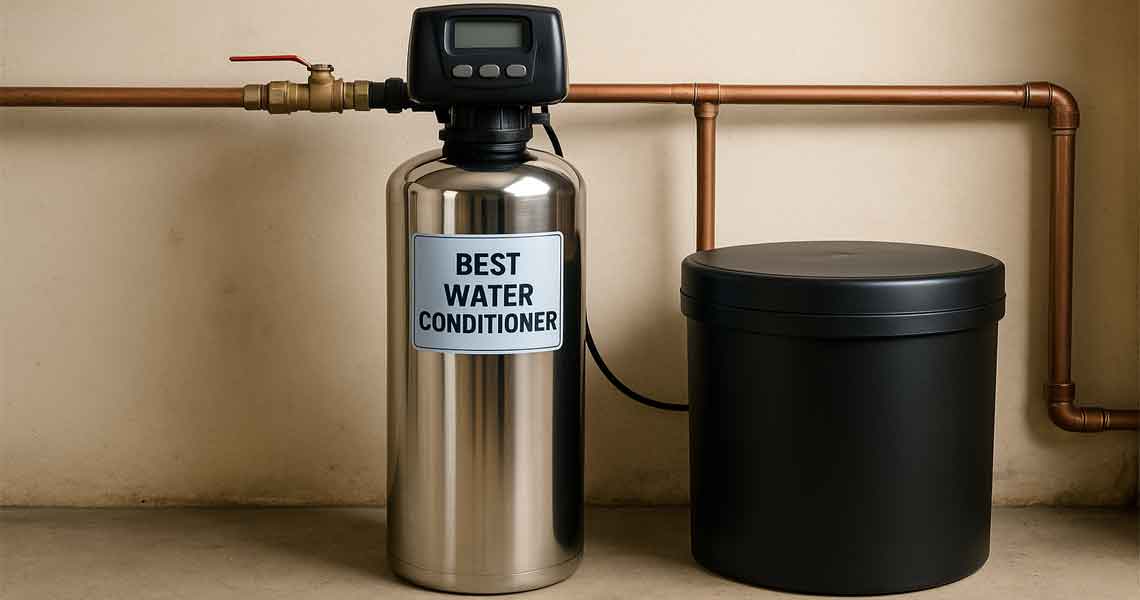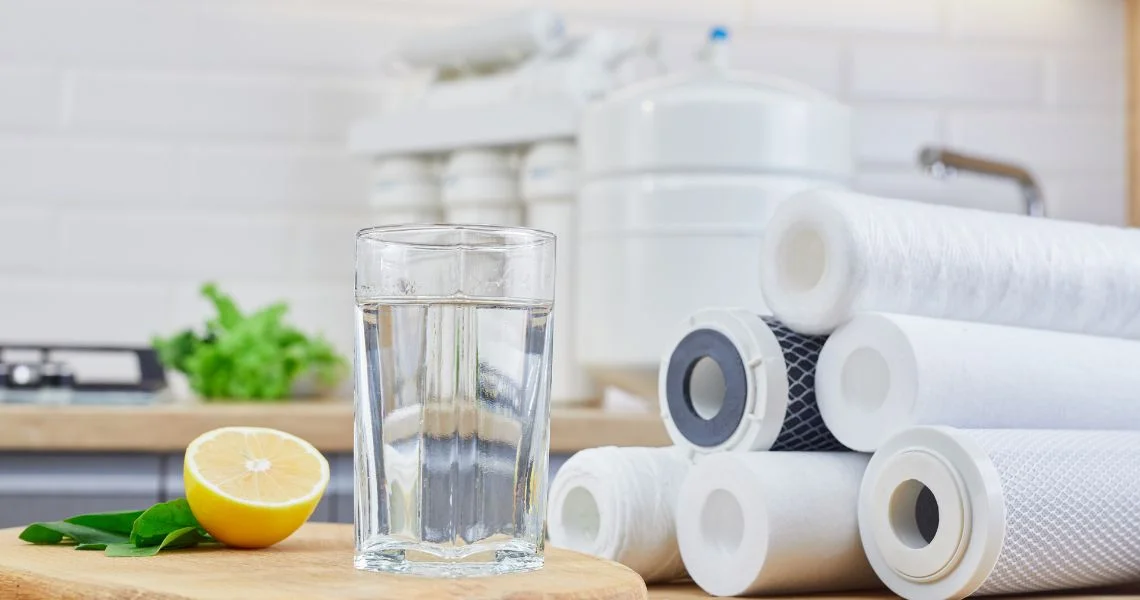Why Cleaning Your Water Filter System Matters
- Improved Performance: Filters that trap these contaminants become full over time and are no longer effective. Cleaning this buildup enhances water flow and, more importantly, filtration efficiency. Enhanced
- Water Quality: This leads to healthier water that is more pleasing to the palate since there are no impurities inside the filter system. Extended
- Lifespan: Cleaning ensures that the filter cartridges have a longer life than when they are not cleaned, reducing the cost incurred in frequently replacing them. Additionally, understanding water softeners vs water filters can help you choose the right system based on your needs—whether removing hard minerals or eliminating harmful contaminants.
- Contamination: If a filter system is improperly maintained, it turns into a bacterial culture. Cleaning prevents this and makes safe drinking water possible.
Understanding Different Types of Water Filter Systems
- Cartridge Filters: These are perhaps the most common ones. They come with replaceable filter cartridges that help trap contaminants. Some of these are pitcher filters and countertop systems. Reverse Osmosis
- (RO) Systems: These complex systems use a multistage water purification process that filters out different impurities, including dissolved solids.
- Whole-house filter Systems: These systems purify all the water that comes into your house for cleaning, cooking, showering, etc. Investing in the best whole house water filtration system ensures that every tap in your home provides clean, safe water, reducing exposure to harmful contaminants.
Experience the Wellness Water Purification Difference
At Wellness Water Purification, we do our best to provide the ultimate complete spectrum of water purification services. Whether you’re looking for water filtration Pensacola FL, or nationwide, our advanced filtration solutions remove a wide array of contaminants, ensuring clean, pure water for your home or business. Go beyond simple filtration! Our filtration solutions’ advanced features help remove a wide array of contaminants so that you will have clean and pure water in your commercial or residential property. But that’s not all. We further enhance this water to provide essential minerals for health and soften and alkalinise it for a feeling and taste that offers numerous improvements to the body. Upgrade your well-being and protect your health with the assistance of Wellness Water Purification!
How to clean a water filter: A Step-by-Step Guide
Cleaning a Cartridge Filter System
- Consult the Manual: One should refer to the filter system’s user manual to understand which process should be followed when cleaning it. The frequency of cleaning and/or heating settings, together with the replacement of the cartridges, may vary from brand to brand and model.
- Locate the Filter Housing: Identify the housings with the replaceable filter cartridge installed. The housing can be installed under the sink or on any countertop where plumbing accessibility is feasible.
- Turn Off the Water Supply: If you use a filter system, search for its shut-off valve and turn it anticlockwise to stop the water supply.
- Remove the Filter Housing: Depending on the type of system in use, one may need to apply a filter wrench to dismantle the housing. Carefully remove it so that all the water drains out for the best outcome.
- Dispose of the Old Cartridge: Twist the used cartridge counterclockwise to unlock it from the casing. Remove the cartridge and dispose of it in a plastic bag.
- Clean the Housing (Optional): As described in the manual, use a mild soap solution and clean the housing inside using a soft cloth. Wash all items, rinse them off the water, and ensure they are dry.
- Install the New Cartridge: Take a new cartridge and insert it according to the company guidelines mentioned in the instruction booklet. Make sure it seats correctly and does not have any loose parts.
- Replace the Housing and Turn On Water: Refit the housing, ensure that it is well screwed. Switch on the water supply and identify areas that may be leaking.
- Flush the System: Fluent the filter by passing water through it for several minutes before using it in the experiment to remove any air bubbles and loose particles it may contain.
Cleaning a Reverse Osmosis System
- Consult the Manual: As with cartridge filters, clean them according to the RO system manufacturer’s instructions and interval.
- Locate the Pre-filters: RO systems usually have pre-filters that filter out sediment and chlorine before they reach the membrane. To clean the tank, these pre-filters need to be cleaned frequently, or else they need to be replaced entirely.
- Clean or Replace Pre-filters: When using the air purifiers, clean or even replace the pre-filters as stated by the manufacturer. This might include washing them with a detergent or replacing them with a fresh one.
- Clean the RO Membrane (Optional): Some RO systems permit cleaning the membrane with a particular cleaning solution. Check the manual to find out if this is the case with your system, and if so, do what is indicated.
- Sanitise the System (Optional): Some RO system manufacturers advise periodic sanitisation with chlorine bleach. In this regard, one should always adhere to the manufacturer’s guidelines on diluting the detergent and rinse off the surface well.
Cleaning a Whole House Filter System
- Consult the Manual: Always consult the manufacturer’s manual of your whole-house filter system for the recommended cleaning methods and schedules.
- Locate the Filter: The positioning of the filter mainly depends on the type of system being used. A canister filter placed close to the water meter or a cartridge filter placed within the plumbing line could be used.
- Turn off the Water Supply: Locate and close the master shut-off valve for the whole dwelling water system.
- Bypass the Filter (Optional): Some whole-house filter systems come with a bypass valve. This valve helps unfiltered water pass through the house while other filters are being overhauled. If your system has a bypass valve, use it while cleaning because it will help regulate the process.
- Remove the Filter Housing: Depending on your filter, you may need a wrench or other related implements to unscrew the housing. Consult the user manual to learn how to remove it safely.
- Clean or Replace the Filter Media: Whole-house filters further harness all sorts of media, such as sand, gravel, or even activated carbon. Depending on the type used and how absorbent the media may be, these media may need cleaning or replacement. For particular guidelines, consult the manual.
- Reinstall the Filter Housing and Turn On Water: Reinstall the filter housing without any leaks and ensure that its tightness is correct. If your system has a bypass valve, shut it before opening the main water supply.
- Flush the System: Switch on the taps in your house to open them up for a few minutes to let out the trapped air or debris.
Additional Tips for Maintaining Your Water Filter System
- Schedule Regular Cleaning: Schedule times to clean your filter system according to the manufacturer’s indications. Pre-filter cleaning may be weekly or monthly, or cartridge filter cleaning bi-annually or less frequently for WH systems.
- Monitor Filter Performance: Look for changes in water flow, taste, or odour, and do not take the services of a plumber for granted. A significant drop can signify that one of the filters is dirty and requires washing or changing the respective equipment.
- Invest in a Quality Filter System: Selecting well-known manufacturers and the most appropriate system with easily accessible replacement cartridges helps with maintenance and functionality. If you’re wondering how to choose a water filtration system, consider factors like water quality, household size, and maintenance requirements to find the perfect fit.
- Consider Professional Maintenance: Complex whole-house filter systems should be serviced and cleaned professionally at least every few years.
With these cleaning and maintenance tips, you will get the most out of the water filter system for years. This means having clean, healthy, and delicate drinking water for your entire family whenever you turn on the faucet. Contact us now to find the best water filtration solution for your home or business!
Conclusion
With these maintenance and cleaning tips, you will be able to get the most out of the water filter system for years. This in the sense of having fresh, healthy, and sensitive drinking water for your entire family every time you turn on the faucet. Call us today for the best whole home water filtration system for your home or business!
Frequently Asked Questions (FAQs)
1. Is a whole-house system superior to a point-of-use system?
Yes, the best whole house water filtration system filters all incoming water in your home, delivering clean water for drinking, cooking, bathing, and laundry. It’s perfect for whole-house protection against contaminants.
2. How do I get trusted water filtration in Pensacola, FL?
Seek local professionals such as Wellness Water Purification, which provides high-quality water filtration Pensacola FL systems that treat local water conditions well and at an affordable cost.
3. What is the best whole home water filtration system for well water?
For well water, select systems with sediment filtration, UV sterilization, and iron/manganese removal. The best whole home water filtration system for well water provides safe, odorless water across your property.
4. Will a Florida home need a water softener?
Yes, most parts of Florida do have hard water. When you see scale deposits on faucets or appliances, it may be time to wonder, “do you need a water softener in Florida?” In a majority of instances, the answer is yes.





